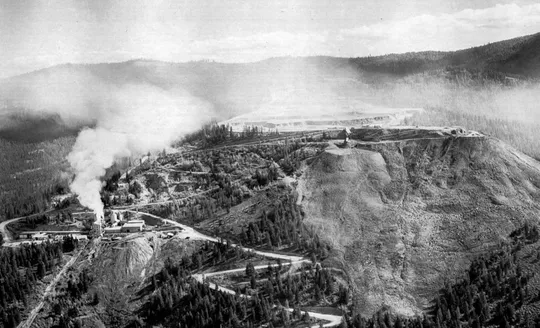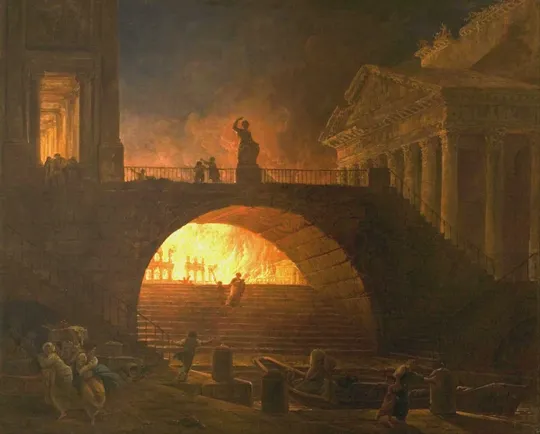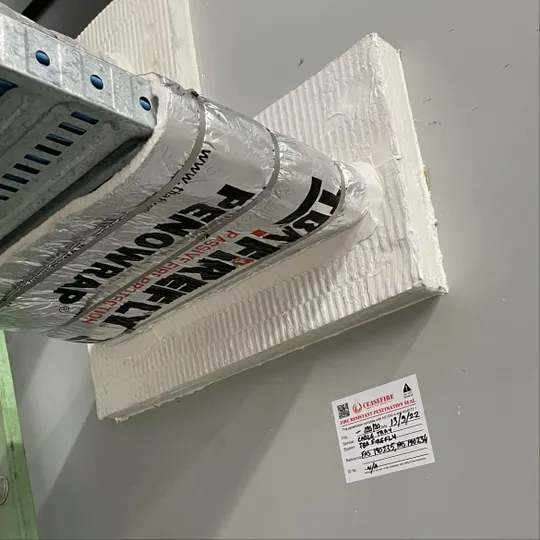Intumescent fire protection is a type of passive fire protection that has revolutionised the way we protect buildings from the spread of fire. Intumescent coatings are designed to expand when exposed to high temperatures, creating a protective layer that helps prevent the spread of fire and smoke. The invention of intumescent fire protection is a relatively recent development, with origins in the mid-20th century.
Brief History
The first intumescent fire protection was patented for development starting in the 1940’s; coatings were developed in the 1950s and 1960s in response to new fire safety regulations and standards. These coatings were initially made from materials such as epoxy, urethane, and acrylic resins and were used primarily in industrial and commercial settings. The coatings were relatively simple in design, consisting of a single layer of material that expanded when exposed to heat. Over time, however, intumescent coatings became more complex and sophisticated, with multiple layers and varying thicknesses that could be tailored to specific building materials and fire ratings.
Developments of Intumescent

One of the key breakthroughs in the development of intumescent fire protection came in the 1970s, when researchers discovered the benefits of adding graphite to intumescent coatings. Graphite is a naturally fire-resistant material that can withstand high temperatures without breaking down or releasing toxic fumes. By adding graphite to intumescent coatings, researchers were able to improve their fire resistance and durability, making them more effective at preventing the spread of fire and smoke by allowing the graphite to begin the intumescent phase effectively at high temperatures.
Another important development in the history of intumescent fire protection came in the 1980s, when researchers began experimenting with new materials, such as polyurethane and silicone. These materials had unique properties that made them ideal for use in intumescent coatings, including excellent adhesion, flexibility, and resistance to moisture and UV radiation.
The benefits of Intumescent Paint
Today, intumescent fire protection coatings are widely used in a variety of settings, from commercial and industrial buildings to residential homes and apartments. They are especially common in high-rise buildings, where the risk of fire spread is especially high.
One of the key benefits of intumescent fire protection is its ability to protect a wide range of building materials, including steel, concrete, and wood. Intumescent coatings can be applied directly to these materials, creating a barrier that helps prevent the spread of fire and smoke.
Intumescent coatings are also highly customisable, allowing builders and developers to edit their fire protection systems to meet the specific needs of their buildings. Different coatings can be used to achieve different fire ratings, depending on the size, location, and intended use of the building.
Despite their many benefits, intumescent coatings are not without their challenges. One of the biggest challenges is ensuring that the coatings are properly applied. If the coatings are not applied correctly, they may not expand properly when exposed to heat, rendering them ineffective at preventing the spread of fire and smoke.
Additionally, intumescent coatings require regular inspections and maintenance to ensure that they remain in good condition. This may include cleaning the coatings, repairing any damage or wear and tear, and reapplying the coatings as necessary to maintain their fire resistance.
Conclusion
In conclusion, the invention of intumescent fire protection has had a profound impact on the way we protect buildings from the spread of fire. Since their origins in the mid-20th century, intumescent coatings have become a critical component of modern fire protection systems, helping to prevent the spread of fire and smoke, and saving countless lives and properties in the process. While there are still challenges to overcome, the future of intumescent fire protection looks bright as researchers and manufacturers continue to develop new and innovative coatings that are even more effective at preventing the spread of fire and smoke.











